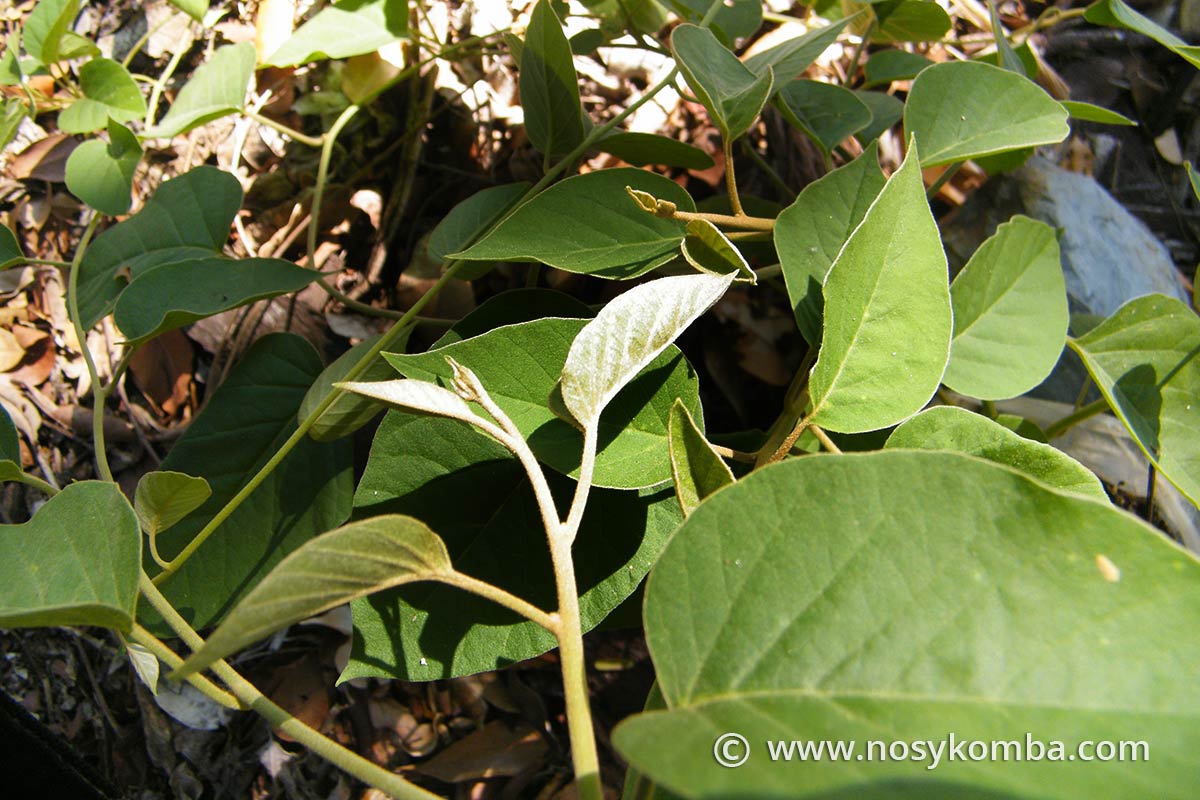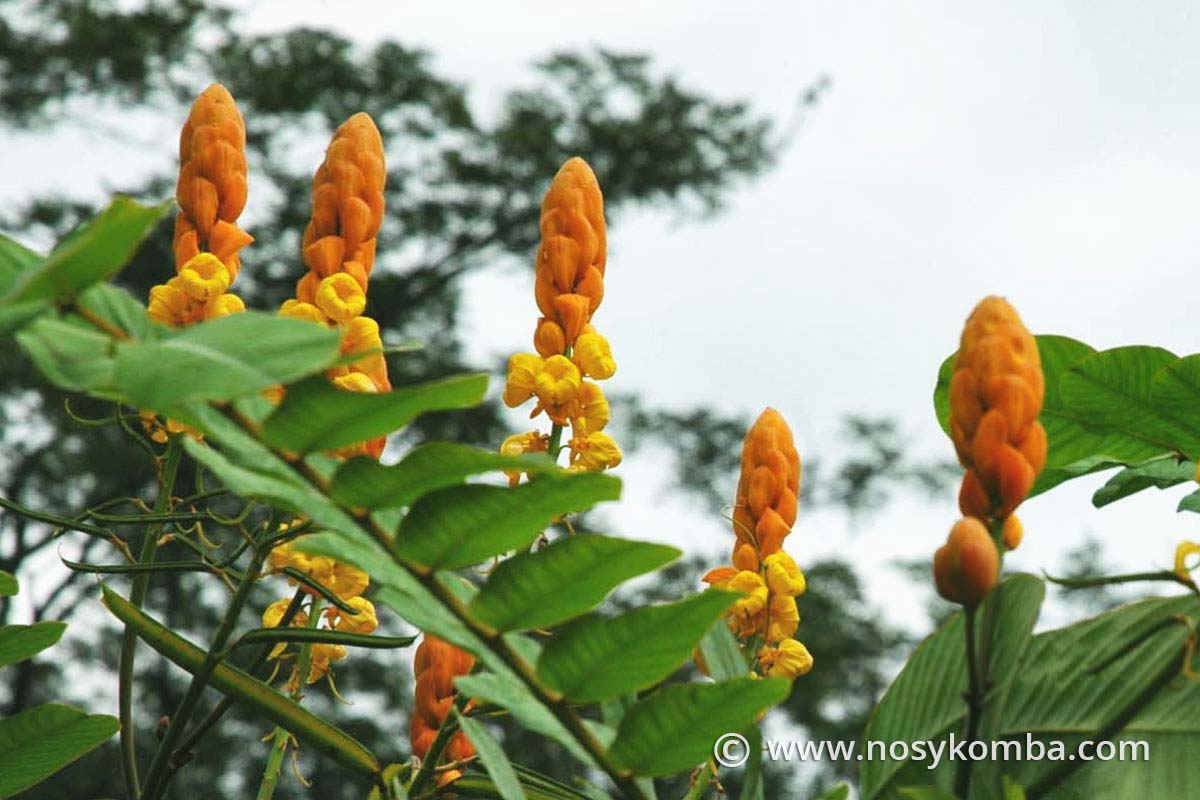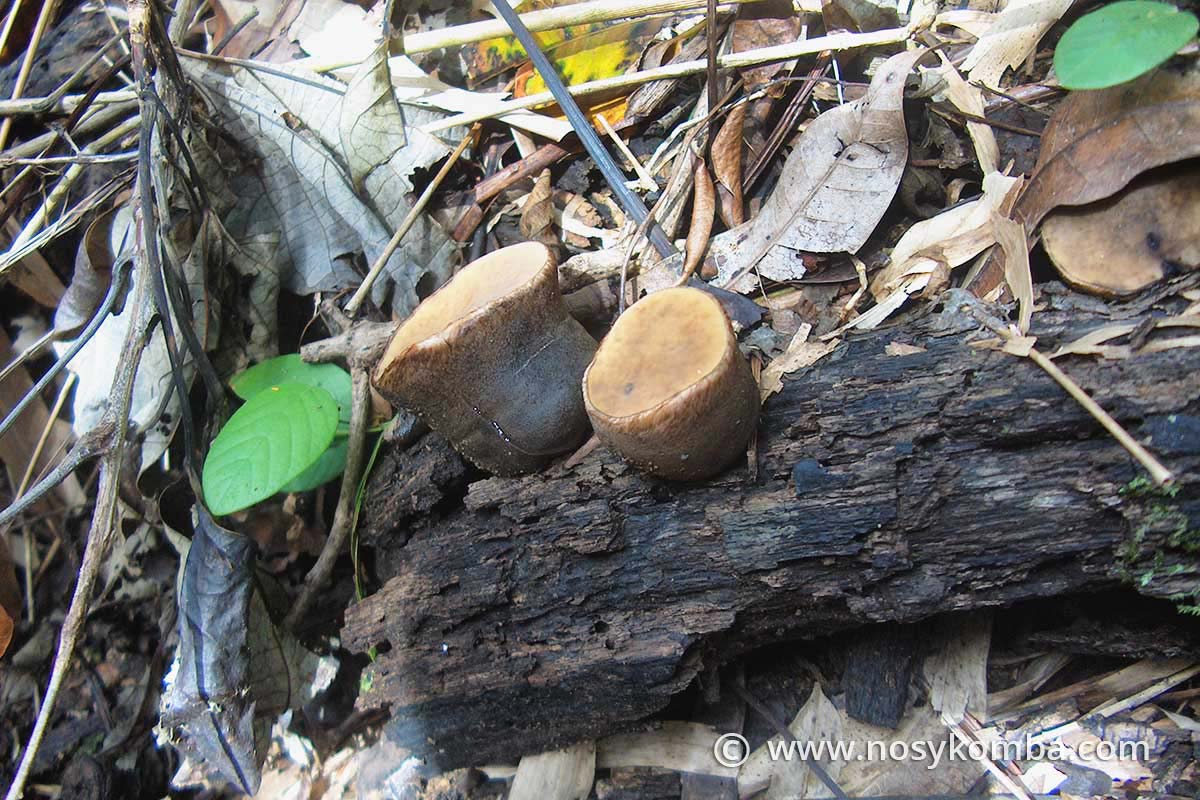Traditional medicine occupies a very important place in Nosy Komba as in all Madagascar.
On the 188 sorts of tropical flora can be found all over the island as well as about 70 of medicinal plants used locally as current remedies.
The people of Nosy Komba exploit the virtues of the plants which are often recommended by “Sikidy” or “Ombiasy”, a kind of healer or magician, who often communicate with the spirit of the ancestors.
Stomach aches, difficult pregnancies, rheumatism, diarrhoea and many other illnesses are treated with these medicinal plants which are generally consumed as a decoction of leaves, barks, branches or even roots. These plants can also be crushed and mixed with coconut oil to be used as a balm for massages.
Here are some medicinal plants used by the people:

Tsinono, Jean Robert
Family: Euphorbiaceae
Genus: Euphorbia Hirta
The leaves are consumed in decoction to treat problems related to urology in men and heavy periods in women. Jean robert has an antispasmodic action. The plant is recommended more particularly to look after asthma, to slacken bronchi and facilitate breathing. Slightly laxative and expectorant, it is also prescribed to treat bronchitis and other disorders of the respiratory system.
Fahmangobay, Ahibitsy
Family: Verbenaceae
Genus: Stachytarpheta jamaicensis
The whole plant of “blue vervain” is consumed as a decoction against diabetes.


Madagascar Periwinkle
Family: Apocynaceae
Genus: Catharanthus roseus
The plant is consumed entirely from the root to the flower to calm diarrhoea. This drink is bitter. The use of periwinkle to treat diabetes has prompted much research into its properties. Vincristine (an alkaloid extracted from the plant) and vinblastine (a toxin extracted from the plant) are two of the most important chemical compounds discovered in the last forty years.
Antivavymangotroto
Consumed in decoction, this liana is formidable, it does not have thorns but it is very difficult to ingest because it is ultra-bitter. It is recommended to calm the pains of the back and the big tiredness’s. It cleans the liver and kidneys in depth.


Ambarasaha
Family: Menispermaceae
Genus: Burasaia madagascariensis
The roots of this tree are used in decoction to fight against malaria but also to treat jaundice and spleen problems. The decoction is bitter. The root is also used to make masks to protect the skin of yellow color for the face of women: Tenty or Masonjoany. The tree gives yellow drupaceous fruits that makis like to enjoy them.
Lazalaza
Family: Euphoibiaceae
Genus: Croton
The bark and stems of this tree have anti-inflammatory properties and can treat skin diseases such as measles and chicken pox. The leaves in decoction help to reduce fever.


Sakoankenkiñy
Family: Aloeaceae
Genus: Aloe vera
It is the plant of all remedies: Its bitter and slightly acid taste is unique.
Its bitter properties treat burns, sunburns and eczema.
The gel obtained when the leaf is cut calms stomach ulcers. This gel contains anthraquinones, which are laxative substances. They facilitate intestinal transit.
Sodifafana
Family: Crassulaceae
Genus: Kalanchoe pinnata
The leaves of this easily recognizable fatty plant are heated on a grid. After heating, the juice that comes out of the leaves is collected and used to treat ear infections like eyewash.


Kalabera
Family: Verbenaceae
Genus: Lantana camara
The whole plant is consumed as an herbal decoction to reduce fever.
Rômba
Family: Lamiaceae
Genus: Ocimum gratissimum
More commonly known as African basil.
The leaves are consumed as an inhalation in case of flu, otherwise they are crushed and the juice obtained treats colds and coughs. Women after childbirth consume the rômba as a decoction and then wash themselves with the water of the infused leaves.


Morongo – Ananambo
Family: Moringaceae
Genus: Moringa olifeira
The small leaves of the moringa are highly prized to cook the traditional dish “Romazava”. The leaves and flowers are also consumed in herbal decoction.
The crushed leaves have an antioxidant and healing role. After being crushed, they are applied to a wound as a healing bandage.
Balsamy
Family: Lamiaceae
Genus: Plectranthus amboinicus
Also known as big thyme or thick mint.
The leaves are consumed by inhalation or crushed to recover the juice, to treat colds and prevent flu-like conditions. It is used as an herbal decoction to soothe painful periods.


Kabidza
Famiy: Taccaceae
Genus: Tacca leontopetaloïdes
The tubers of this plant are similar to potatoes. After being prepared and soaked, they are then dried and made into flour. The flour is edible, but care must be taken when preparing it as the plant is “toxic”. The flour is mixed with a little hot water to obtain a paste which is consumed to cure stomach aches.
Ruavitry
The leaves of this thorny shrub are consumed in decoction to fight against fatigue.


Tañanatsasaka
Family: Polypodiaceae
Genus: Phymatosorus scolopendria
This plant is consumed entirely in decoction by men who have problems to urinate.
Turmeric
Family: Zingiberaceae
Genus: Curcuma zedoaria
Does it need to be introduced? The aromatic young rhizome of turmeric treats indigestion, nausea, flatulence and bloating. This plant is also consumed in infusion to prevent respiratory diseases.
The curcumol and curdione contained in the plant would have anti-carcinogenic properties.


Tsipopoko
Family: Passifloraceae
Genus: Passiflora foetida
This liana is consumed in infusion as a worming agent for children. Adults consume it to lower blood pressure.
In the past, the islanders used the hair balls containing the flowers as soap.
Hasigny – Hasina
Family: Asparagaceae
Genus: Dracaena
The rods are applied to wounds, but mainly to heal fractures.


Candle bush
Family: Fabaceae
Genus: Senna alata
The crushed leaves are rubbed on the skin to treat dermatitis. The leaves are also consumed in decoction to treat liver diseases.
Bitter melon
Family: Cucurbitaceae
Genus: Momordica charantia
When consumed as a decoction, it is one of the most preventive local medicinal plants. It can be found in every street and village in the region. The bitterness of most “cleansing” herbal decoctions has that recognisable taste. The vegetables are edible; the Creoles call it the bitter cucumber.


Mushroom eyewash
This spongy fungus secretes a liquid used as an eyewash.
Pigeon pea
Family: Fabaceae
Genus: Cajanus cajan
The leaves are consumed in decoction to treat diarrhoea and stomach aches.
The peas are edible, it’s the pigeon pea or angola pea.


Talapetraka
Family: Apiaceae
Genus: Centella asiatica
The crushed leaves are used to heal cuts and burns.
The leaves are used as an herbal decoction to treat stomach aches.
Ahipisaka
Family: Poaceae
Genus: Stenotaphrum dimidiatum
The plant looks like grass.
Women drink the decoction to cleanse the uterus, however, the consumption of this plant is dangerous for women in early pregnancy. Drinking this preparation can cause an abortion.


Neem Tree
Family: Meliaceae
Genus: Azadirachta indica
The leaves of the Margousier tree have multiple functions including the treatment of stomach aches and skin diseases. It is an excellent antifungal and antiparasitic.
Mexican sunflower
Family: Asteraceae
Genus: Tithonia diversifolia
The leaves consumed in infusion relieve stomach aches. The dried leaves serve as an anti-inflammatory.






